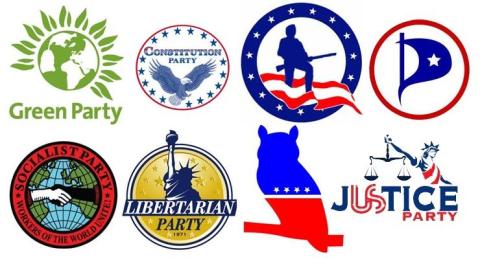Actionable Ways to Establish More Successful Third-Party Campaigns
It's no secret — American voters are fed up. In the 2016 presidential elections, nearly half of all eligible voters did not bother to go to the polls. A good deal of the frustration stems from the fact that Americans are fed up with our current two-party system.
In fact, the number one reason given for failure to participate in the voting process, even more than time constraints, was the fact that neither of the choices in the most important races held any appeal for members of either party.
A Third-Party Candidate -- Or Three, Four, or More Parties?
An obvious way to break the two-party-or-bust model is by having more third-party candidates willing to run in important races. But would that be enough?
A third-party candidate in our nation currently lacks a guaranteed base of financial supporters. This means in key races, such as for US Senate races or the presidency, third-party candidates face impossible financial hurdles.
Creating a viable third-party, or, better yet, a number of third parties, could enable third-party candidates to build a sustainable financial base like the Democrats and Republicans have. These parties could raise funds whether or not the election season was in full swing.
Many third parties do already exist, too — the Green Party and the Libertarian Party are two notable examples. Were these parties to expand their fundraising base outside of election seasons, voters would have more choices on the ballot, and, more importantly, more choices that reflected their beliefs and attitudes.
The Return of Multi-Seat Election Districts
We used to have viable third parties in this nation. One of the reasons for their demise is the 1967 Uniform Congressional Districts Act. This act fostered our current “winner takes all” attitude toward congressional seats that fosters a runoff between candidates from the two major parties.
Should this act be repealed, third-party candidates could win a congressional seat with as little as 10% of the popular vote.
This would be a powerful “in” for third-party candidates who set their sights on higher political offices, and it would also create much needed third-party voices in Congress.
Currently, our only senators outside the two major parties, for example, are Sen. Angus King of Maine and Sen. Bernie Sanders of Vermont. Even self-proclaimed Libertarian Rand Paul runs on a Republican ticket.
Imagine if instead of 48 Senators representing either the Democratic or the Republican Party, we had 15 representing Democrats, 15 representing Republicans, 9 representing Socialists, and 9 representing Libertarians. Imagine how different our congressional dialogue would be, and how this would open the door for a third-party presidency.
Bringing Back Credibility in Politics
One of the biggest problems with our current two-party system is the perception, real and imagined, that the candidates running for both parties are dishonest and untrustworthy. Furthermore, disenchantment regarding the Electoral College discourages many from voting in even presidential elections.
Imagine if, instead of having only one Democrat and one Republican running for president, we had an independent and four candidates from four different political parties. Imagine as well if the Committee on Presidential Debates allowed third-party or independent candidates equal time on the debate stage.
Candidate credibility would immediately be increased, as candidates would not have to contend against only one opponent, but three or four who had the means and methods to question their integrity.
In addition, in a three (or more)-way race, it is possible that no candidate would win a majority of the Electoral College votes. This would create an immediate overhaul in the current system, a system which many people feel is run by special interests, not the concept of one person, one vote.
Those calling for a revision of the Electoral process would immediately be placated.
The Danger of Inaction
The dangers of failing to restructure our current two-party system are obvious. Should the current model continue, the American public will continue to grow disenchanted with the political process.
Instead of a democracy, our system will continue to be run by special interests who work for their corporate donors, not for the voters.
Scarier still, failure to seriously reconsider our current two-party system can lead to the rise of powerful and vicious demagogues. Extremists will continue to try to hijack the political process — and succeed — unless change is made.
Democracy is founded on the idea of choice. It is well past time to give the American voter a true choice in their elected officials by eliminating the barriers prohibiting third-party candidates from fully participating in politics and welcoming them to the American political table.
Editor's note: This article originally published on The Centrist Project's blog, and has been modified slightly for publication on IVN.
